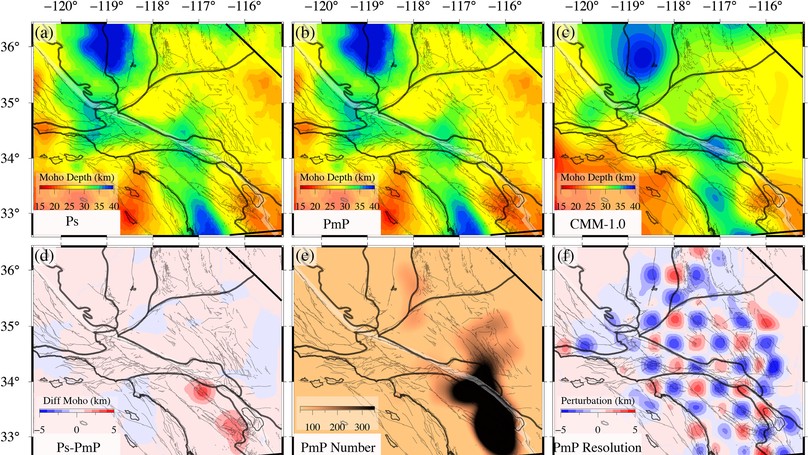Welcome to Mathematical Imaging and Geophysics Group~
Develop advanced mathematical imaging tools to investigate the Earth’s interior
Mathematical Imaging and Geophysics Group (MIG) is primarily focused on developing advanced mathematical tools to better image the interior of the Earth at a variety of scales, namely, from the global map of the crust and mantle to the detailed subsurface structure of a hydrocarbon/geothermal reservoir. Through developing novel mathematical modelling tools and the state-of-the-art seismic imaging technology, analyzing the full waveform contents of high-quality seismic data, and relying on high performance computing, we aim to gain insight into the geodynamic processes of the Earth’s interior and provide advanced methods to solve realistic problems faced by modern oil-and-gas Exploration/Production companies and contractors.
Featured Publications

The Moho discontinuity plays an important role in crustal growth and evolution. In this study, we delineate the Moho geometry in southern California by jointly using local Moho-reflected waves PmP and teleseismic Moho-converted waves Ps. To well constrain the Moho geometry, we have developed a two-stage process to pick PmP waves and have created a reliable PmP travel time data set with a total of 10,192 picks. We have also extracted 38,648 high-quality P-wave receiver functions (RFs). The Moho depth is initially estimated via the common conversion point (CCP) stacking of RFs and then refined by inverting the PmP travel time data in a community velocity model (CVM-H, version 15.1.1). The newly built Moho geometry is generally consistent with the California Moho Model version 1.0 (CMM-1.0), that is, a shallow Moho beneath the Salton Trough (23 km), a uniformly shallow Moho beneath the Mojave Desert and the Basin and Range (<29 km), and a sliver of deep Moho under the western Peninsular Ranges, the eastern Transverse Ranges, and the western Sierra Nevada (>34 km). However, our Moho model reveals some new features different from the CMM–1.0, such as a deep Moho (∼34 km) beneath the northern end of the central and western Transverse Ranges, consistent with the observation of deep seismicities due to a thick brittle crust there. We also find a gradual transition from the lower crust to the uppermost mantle beneath the western Peninsular Ranges, leading to the rareness of pickable PmP waves as well as weak Moho-converted signals there.
Contact
- tongping@ntu.edu.sg
- +65-6513 7457
- 21 Nanyang Link, Singapore, 637371